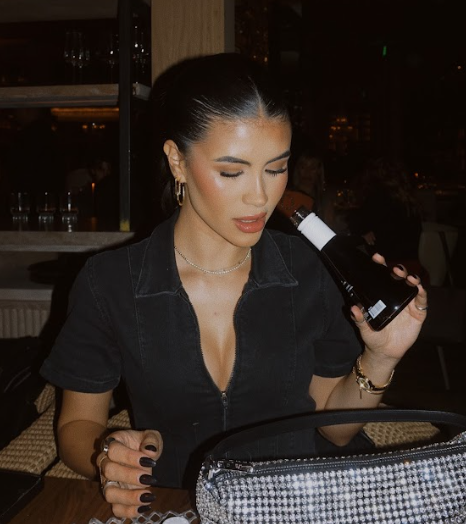
Sherry Wines: Everything You Need To Know About Drinking Sherry Wine
McKenzie HaganOver the years, Sherry wine has gotten itself a pretty unfavorable reputation. Perhaps you had a great-aunt Judith who couldn’t get enough of the stuff, or you’ve heard it mocked in pop culture. So when you think of refined, complex wines, we doubt Sherry is at the top of the list.
However, Sherry wine has plenty to offer the modern wine lover. Whether you fancy a classic Sherry cocktail or are looking for the perfect pair for a tapas-style feast, we’ll give you the lowdown on this Spanish icon.
From what exactly is Sherry, to what Sherry drink tastes like, to how best to serve it, consider this your comprehensive guide to Sherry wine.
What Exactly Is Sherry Wine?
Sherry wine is a fortified wine that hails from Spain. While Sherry is often thought of as a sweet wine, it was traditionally made dry. It’s only in more recent years that Sherry wines have been sweetened to make the tasty dessert wines that people are more familiar with. This sweet Sherry is commonly known as Cream Sherry.
Sherry is a highly alcoholic wine, ranging from 15% ABV to an incredibly boozy 22%. This means it is often enjoyed at the end or beginning of a meal, similar to Port. However, traditionally, Spanish wine lovers would park a nice glass of Sherry on the side of their tapas.
The Process: How Is Sherry Wine Made?
Like all wine, Sherry is made from the process of crushing, fermenting, and maturing grapes. However, because of its highly different tasting experience to other wines, winemakers have to do a lot more to give Sherry its iconic taste.
First of all, Sherry wine is always made from white grapes. Palomino, Moscatel, and Pedro Ximenez grape varieties are used; however, the Palomino grape is by far the most common.
Second, through fermentation, winemakers will create a base white wine from the crushed white grapes. This base wine is then fortified, which means extra alcohol is added. From here, the wine is placed in wooden casks to mature.
In the maturation process of Sherry wine, the role of yeast cannot be overstated. As the yeast converts sugar over time, the yeast cells die and float to the top of the barrel. These dead yeast cells, known as “flor” or “flor yeast,” form a barrier for the Sherry, preventing it from being exposed to oxygen, or oxidation.
While many types of Sherry are produced under this layer of yeast cells, some types are purposely exposed to oxygen. While oxidation can ruin certain types of wine, it can greatly influence the flavor of others wines for the better, as it can soften tannins and unlock nuanced nutty flavors.
An Array of Choices: The Types of Sherry Wine
Much like any of the world’s beloved wine types, there are many different kinds of Sherry wine.
Sherry drink is enjoyed in a range of styles, which can taste completely different from each other. This is achieved through changing the way the wine is produced, usually through varying the aging process.
Here are the five types you should know about.
Fino, Manzanilla, Manzanilla Pasada, Amontillado, Palo Cortado, Oloroso
Fino
Fino translates to “refined” in Spanish and is the name of the most common Sherry wine. This variety is the driest of all the varieties. Fino Sherries are consumed when they are very young and are usually only aged for 4-7 years.
Manzanilla
Manzanilla, which is the Spanish word for “chamomile,” is a subcategory of Fino, as they are made in a similar fashion. However, this dry Sherry wine is produced in a specific region of Southern Spain called Andalusia.
While Fino and Manzanilla have very similar production methods as well as alcohol and sugar content, Manzanilla gets its name for having a chamomile flower-like quality.
Manzanilla Pasada is another variety of this dry, chamomile-flavored Sherry. However, this kind is aged longer, so it has richer, nuttier flavors.
Amontillado
Amontillado starts its life as a Fino but then is fortified and transforms into a richer, darker wine. This Sherry is enjoyed dry but can be sweetened during the winemaking process.
Amontillado Sherry is darker in color than Fino and Manzanilla, and it has a range of more complex, savory flavors. This is because it has a longer aging process.
Palo Cortado
Palo Cortado is a rare variety. Produced differently from the other Sherries on this list, Palo Cortado straddles the border between rich sweetness and crisp dryness.
It was first made by a happy accident. If during the winemaking process the protective flor dies unexpectedly, the wine takes on oxygen, changing the flavor. This was how Palo Cortado was first discovered, but now some winemakers purposely oxidize Sherry to produce this variety.
Oloroso
Oloroso is a rich, dark, and highly alcoholic wine. In fact, it’s known to come in at 17-22% ABV. These wines can be aged for decades, resulting in deeply complex Sherries with plenty of aromatic spices.
Oloroso Sherry is dry, but it can be sweetened to make dessert wines. However, these need to be legally labeled as “Cream Sherry.”
One of the many pleasures of exploring Sherry wine lies in the vast array of flavors and styles it presents. From the bone-dry intensity of a Fino to the rich, unctuous sweetness of a Pedro Ximenez, the world of Sherry encompasses an incredible diversity of wine experiences.
The Unique Flavors: What Does Sherry Wine Taste Like?

Because Sherry comes in many different styles, it's hard to say definitively what it tastes like.
However, for younger Fino Sherries, common tasting notes include preserved lemon, jackfruit, and savory flavors like mushroom.
On the other hand, aged Sherries, such as Amontillado or Oloroso, have common tasting notes of hazelnut, almond, and other rich nuts.
The Art of Pairing: How To Pair Sherry Wine
For younger, less complex styles, like Fino or Manzanilla, look for food pairing options with plenty of umami flavors. Tapas dishes, such as toasted almonds, a nice bowl of olives, or some cured meats, are a nice complement with a glass of Fino Sherry.
While more youthful styles are similar to white wines when it comes to pairing options, aged styles are more like red wines. When enjoying a glass of Oloroso, pair it with equally rich foods, such as creamy blue cheese or a decadent chocolate mousse.
Mastering the Serve: How To Serve Sherry Wine
Due to Sherry wine’s complex flavors and high alcohol content, it is best served chilled in a small glass. When it comes to Sherry, less is more, so a 3-ounce glass is plenty.
Sherry is a versatile drink. Not only does it stand alone as a fine wine, but it also lends itself to mixing in cocktails, adding a robust and complex character. The classic Sherry Cobbler, for instance, combines Sherry, sugar, and fruit for a refreshing and surprisingly balanced drink.
Sherry is also a brilliant cooking wine and can be found in many traditional boozy desserts. Check out this recipe for an old-school Sherry trifle if you want to get a little inventive.
The Joy of Tapas: Embrace the Sherry Experience

Sherry, as a wine and a drink, is an icon in its Spanish homeland and around the world. With so many styles to choose from, Sherry wine is a joyful drink to explore. Whether you love your wines bone dry or bursting with complex, savory flavors, there’s a Sherry out there for you.
It’s perfect when served chilled alongside a tapas feast and pairs well with a wide range of rich and flavorful dishes. So, whether you plan on visiting Spain one day in the future or just love to frequent your local tapas bar, make sure Sherry is on the menu.








